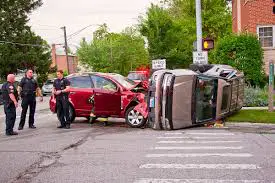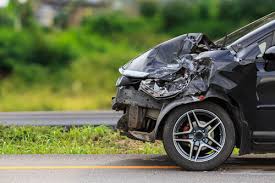Accidents are a common feature in industry particularly in the developing world. In fact some industries such as the mining industry are well known for accidents as evidenced by the Chilean Miners accident.
Accidents result in losses to the workers and their families, the industry, as well as the nations. One thing is evident, a concerted effort must be made to reduce the number and the severity of accidents occurring worldwide since a majority of accidents are preventable.
Factories Act of 1987 deals with the registration of factories, factory workers and professionals exposed to occupational hazards, the safety of workers and penalties for any breach of its provisions, notification of accidents and industrial diseases while the Employees’ Compensation Act of 2011 deals with compensation and penalties.
Terms and Definitions
The ILO defines an accident is an incident which has given rise to injury, ill health or fatality. It has also been defined by the WHO as an unpremeditated event resulting in recognizable damage and as an occurrence in a sequence of events which usually produces unintended injury, death or property damage.
Accidents do not just happen they occur as a result of unsafe acts or unsafe conditions or both. Prevention of accidents requires cooperation of all members of the entire organization.
Read Also : Environmental Life Cycle Assessment
An incident is a work-related event(s) in which an injury or ill health (regardless of severity) or fatality occurred, or could have occurred.
An incident where no injury, ill health, or fatality occurs may also be referred to as a “near-miss”, “near-hit”, “close call” or “dangerous occurrence”.
An emergency situation is a particular type of incident.
Classification of Accidents
Accidents may be classified based on the degree of danger to life and property.
It may be divided into four categories
Minor: No loss of life
Moderate: Injury but no loss of life and property
Major: Loss of life
Disaster: extensive loss of life/ property
Principal-cause and effect
Fire and Explosions
Electrical Accidents
Chemical Accidents and Explosions
Accidents with machines, plant, tools
Falling Objects on the body
Falling of persons in pits or from heights
Accidents from civil works
Human-made accidents
Natural disasters
According to their place of occurrence
Road Traffic Accidents
Domestic accidents including drowning, burns , poisoning, falls, injuries, bites and injuries
Industrial accidents ;these are further classified based on the industry involved such as agricultural accidents, fishing/trawler accidents, mining accidents, construction accidents, quarry accidents, aviation accidents, factory accidents e.t.c

Railway accidents
Violence including trauma, homicide, suicide and war
Causes of Accidents
The causes of accidents are multi-factorial and are grouped under two main headings; Human factors and Environmental Factors.
Human factors
Human factors have been adjudged to contribute to 85% of all accidents and include:
Physical: the physical capability of the worker may be inadequate for the job e.g. visual acuity, hearing
Physiological:
Sex – females have less accidents than men
Age – younger people and elderly people have more accidents
Time – accidents are more common as the day end
Experience – less experienced workers are more prone to accidents
Working hours – longer working hours are usually associated with more accidents
Psychological – mental factors such as carelessness, inattentiveness, overconfidence, ignorance, emotional stress, lack of knowledge accident proneness.
Environmental Factors
Mechanical failure
These are factors such as temperature, poor illumination, humidity, noise and unsafe machines
Acts of nature: weather conditions such as hurricanes, floods
Costs of Industrial Accidents
These may be;
Costs to the worker
Direct costs- Costs of treatment, Morbidity, Disability, Mortality Indirect costs- psychological stress, loss of livelihood
Costs to the organization
Direct costs – Medical costs, Costs of rehabilitation, Compensation costs, Fines by regulatory authorities, Legal costs, Loss of trained manpower, absenteeism, disruption of production schedule
IndirectCosts – Poor public perception, Stake holder engagements such as strikes by unions, Blockades by surrounding communities
Costs to family
Direct costs -Loss of family members, loss of livelihood indirect costs- stress to care giver, loss of income to care giver
Costs tothe community/nation
Direct costs- loss of trained manpower, pressure on medical facilities Accident Prevention
Studies have shown that as much as 98 % of accidents are preventable.
Principles of Accident prevention
Adequate pre-placement examination
Adequate job training
Continuing education
Ensuring safe working environment
Establishing a safety department under a competent safety engineer
Period surveys/ risk assessment to identify hazards
Careful reporting, maintenance of records, review and publication
In conclusion, it is evident that a concerted effort must be made to reduce the number and the severity of accidents occurring worldwide since a majority of these accidents are preventable.
An accident is an incident which has given rise to injury, ill health or fatality. Accidents do not just happen they occur as a result of unsafe acts or unsafe conditions or both.
Read Also : Water and Wastewater Management Complete Guide
Accidents may be classified based on the degree of danger to life and property, principal-cause and effect, according to their place of occurrence.
The causes of accidents are multi-factoral and are grouped under two main headings human factors and environmental factors.
Costs of Industrial Accidents may be costs to the worker, costs to the organization, costs to the family, costs to the community/ nation. Studies have shown that as much as 98 % of accidents are preventable.

